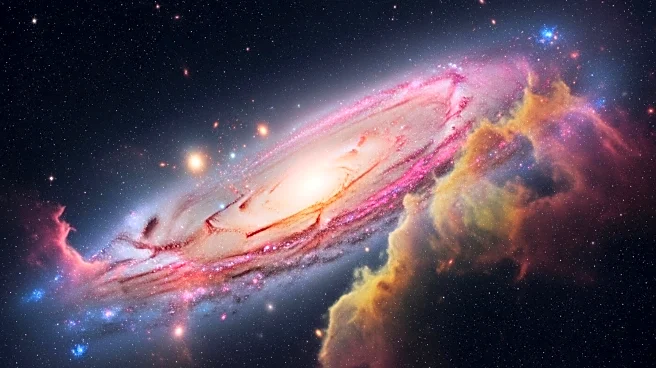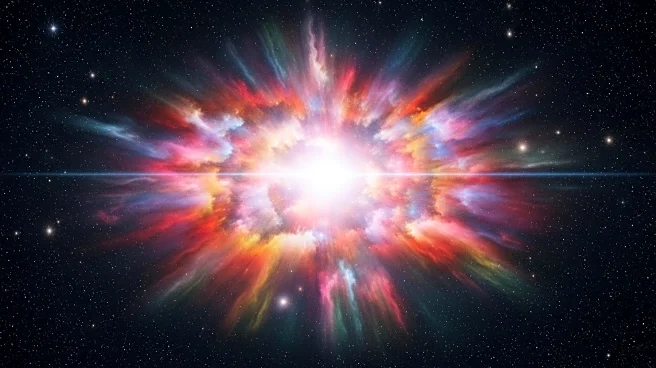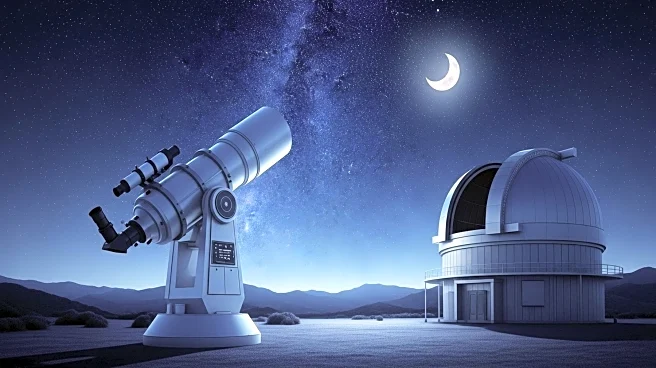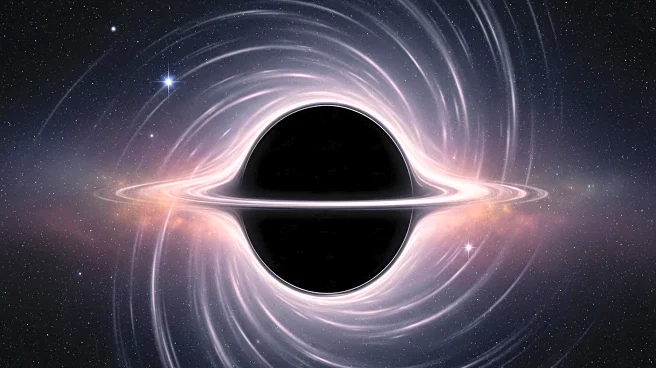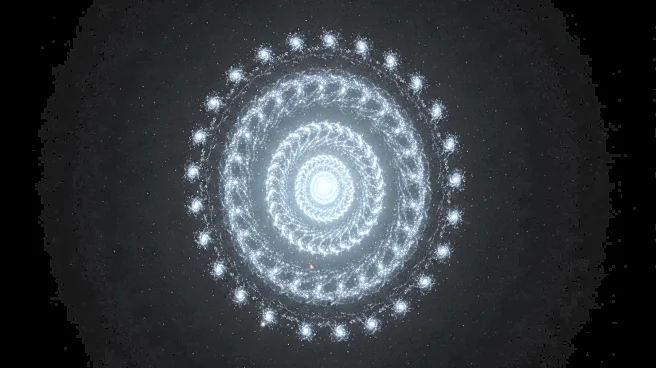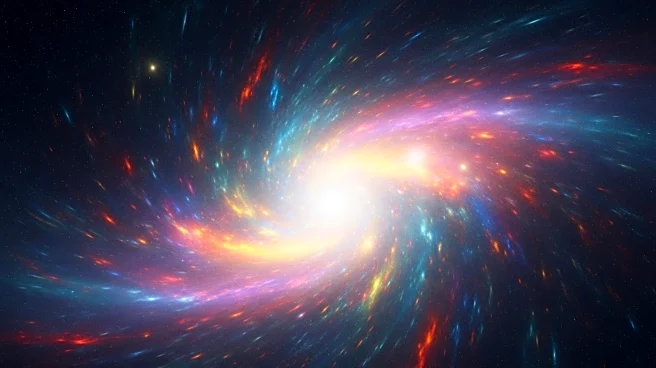What's Happening?
A new study led by Rajendra Gupta, an Adjunct Professor in the Department of Physics at the University of Ottawa, proposes an alternative explanation to the widely accepted theories of dark matter and dark energy. Published in the journal 'Galaxies', the study suggests that the observed phenomena attributed to dark matter and dark energy could be explained by the weakening of fundamental forces, such as gravity, over time. Gupta's model introduces a parameter called Alpha, which allows coupling constants, primarily gravity, to evolve. This evolution could account for the effects typically attributed to dark matter and dark energy, such as galaxy rotation and clustering, without the need for these mysterious substances.
Why It's Important?
This new model challenges the conventional understanding of the universe, which posits that dark matter and dark energy constitute over 95% of the universe's composition. If Gupta's theory is correct, it could revolutionize the field of cosmology by providing a simpler explanation for the universe's expansion and the behavior of galaxies. The implications are significant for astrophysics, as it could eliminate the need for exotic particles and align observations with known physical laws. This could lead to a paradigm shift in how scientists approach the study of the universe, potentially impacting research funding and the direction of future studies.
What's Next?
Further research and validation are necessary to assess the viability of Gupta's model. The scientific community may conduct additional observations and experiments to test the predictions made by this new approach. If proven accurate, it could lead to revisions in textbooks and educational materials, as well as influence the development of new technologies based on a revised understanding of gravitational forces. The model's acceptance would depend on its ability to consistently explain observed phenomena across different scales and conditions.
Beyond the Headlines
Gupta's model raises philosophical questions about the nature of the universe and the constants that govern it. It suggests that what we perceive as mysterious forces might be illusions created by the evolving constants of nature. This perspective could influence discussions on the fundamental laws of physics and the nature of reality, potentially impacting fields beyond astronomy, such as philosophy and theoretical physics.

